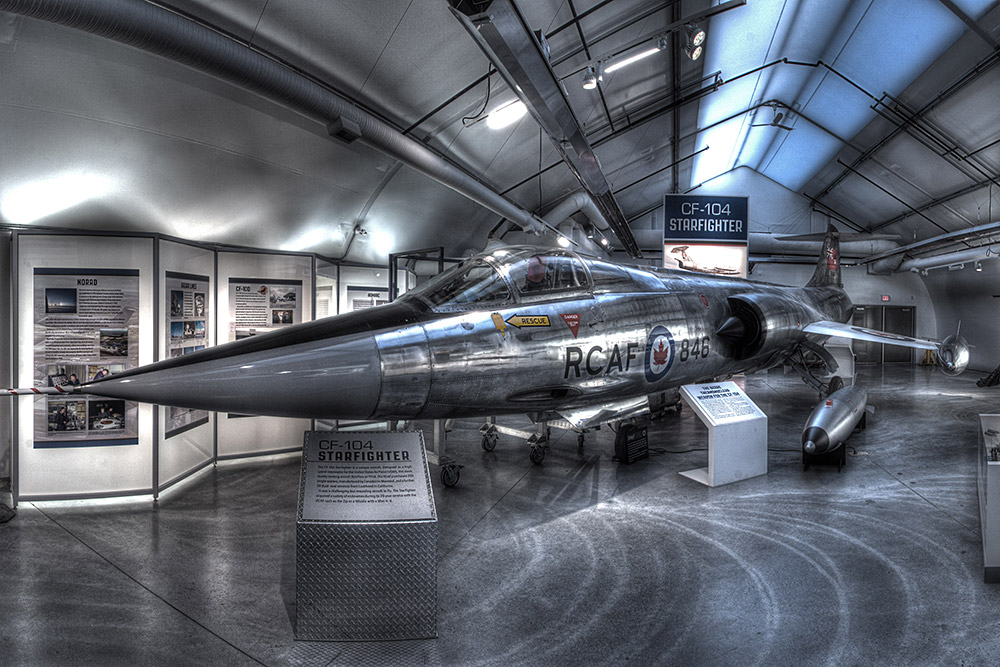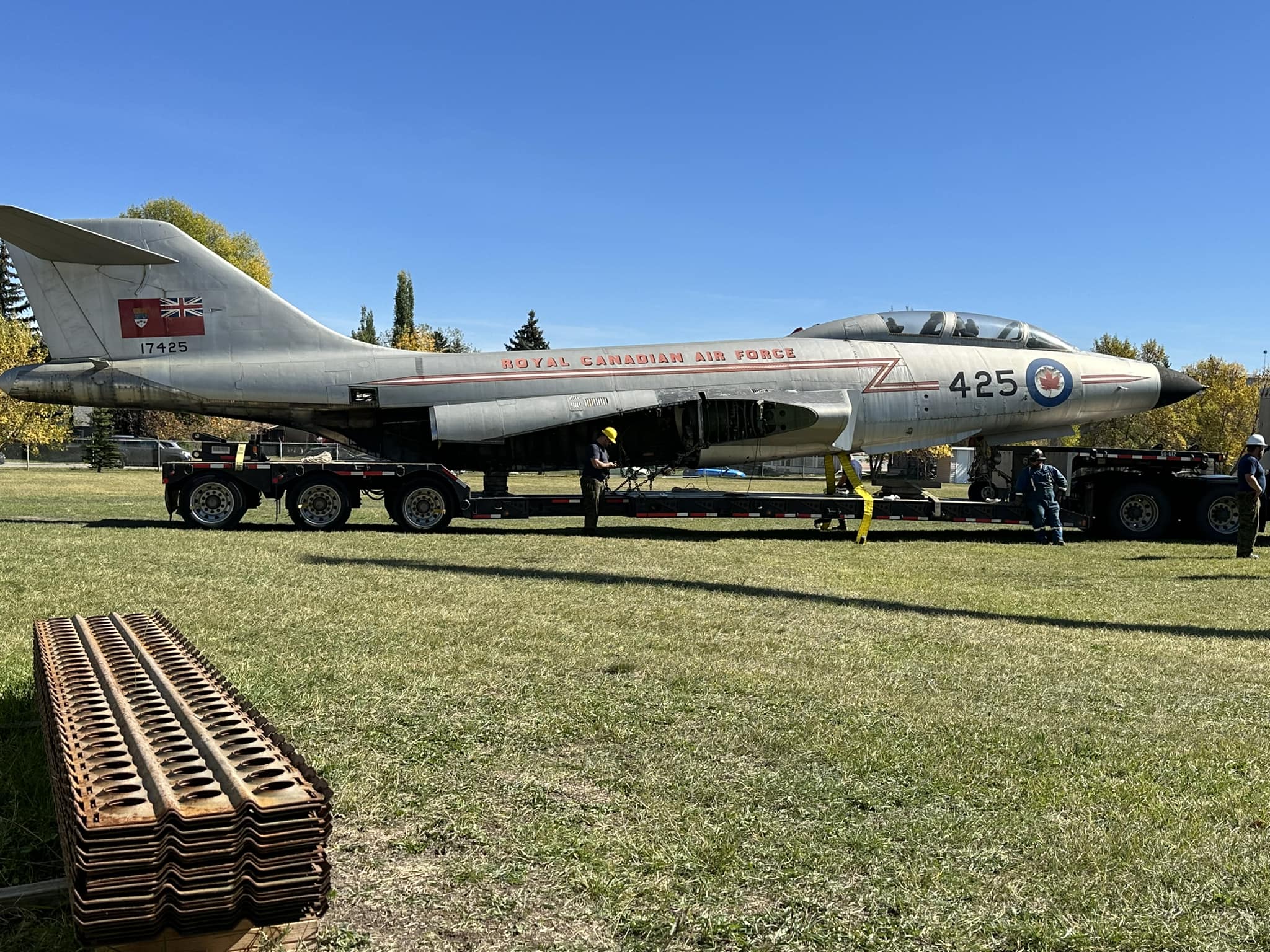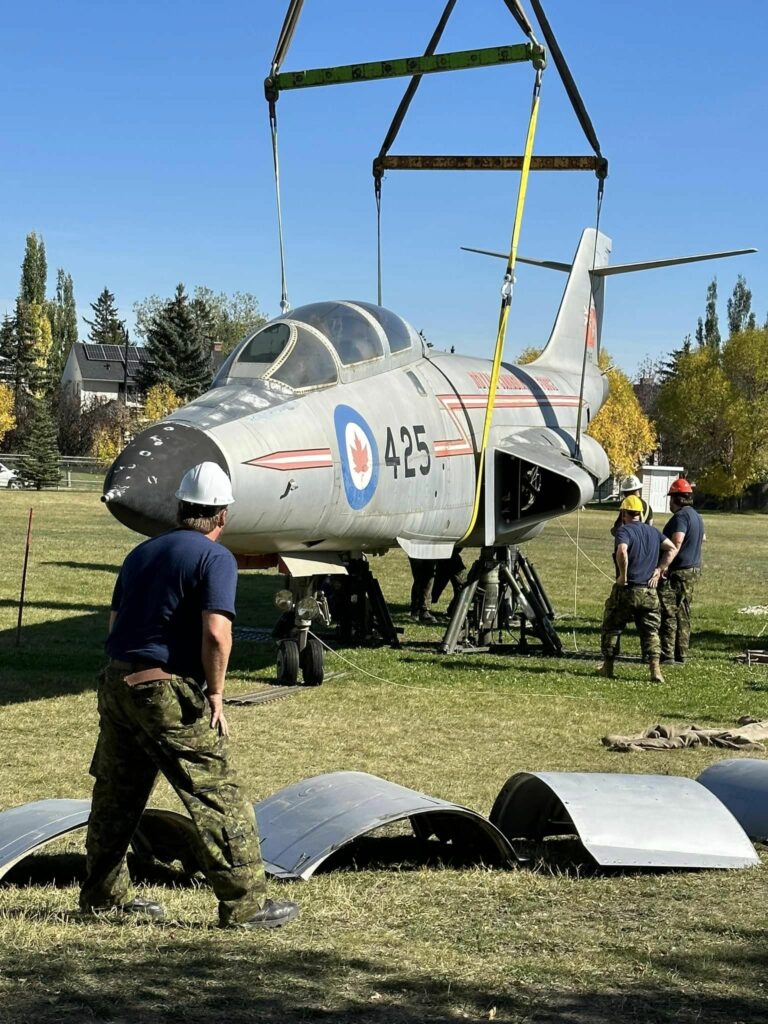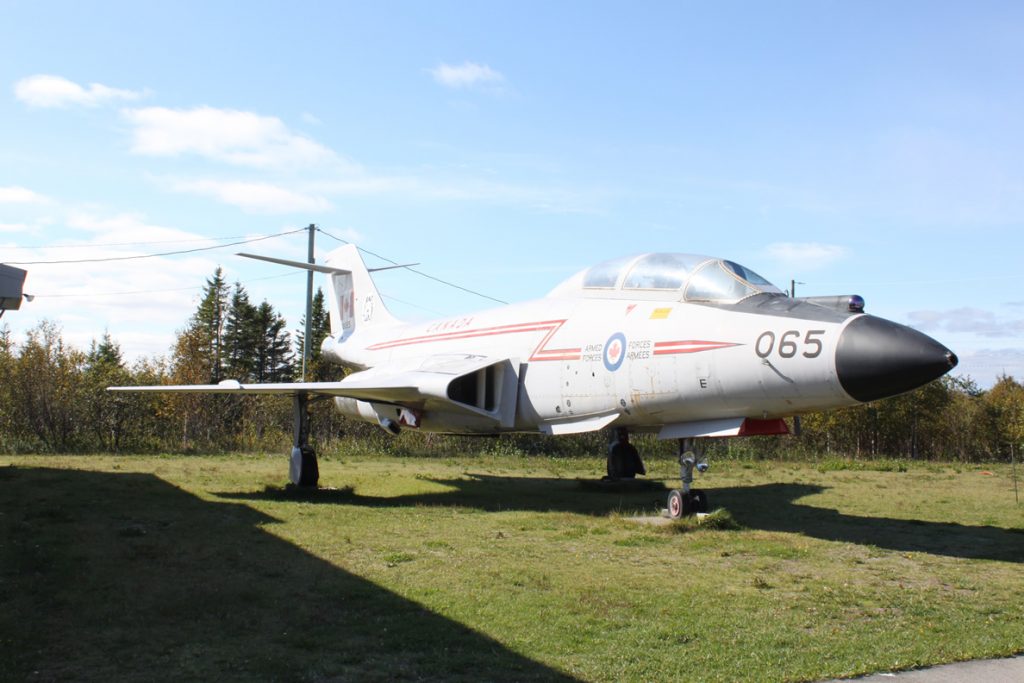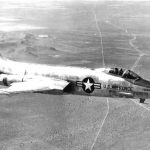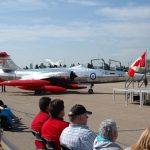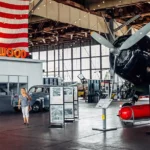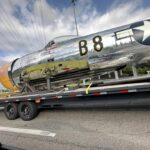On Friday, September 8, the Air Force Museum Society of Alberta (AFMSA) welcomed to its collection a CF-101 Voodoo, once a Canadian mainstay from the 1960s to the 1980s in NATO’s showdown with the Soviets. The aircraft arrived at The Military Museums in Calgary on flatbed trucks from Edmonton’s Alberta Aviation Museum, joining a CF-104 Starfighter, a CF-18 Hornet, an F-86 Sabre, an F-5, and a T-33 trainer – all of which saw Cold War service.
As part of its planned expansion to add three more Cold War jet aircraft to its collection, the Air Force Museum Society of Alberta (AFMSA) received on loan from the Alberta Aviation Museum in Edmonton. The Voodoo was one of Canada’s Cold War fighter jets and flew armed with nuclear weapons (although that was never officially confirmed at the time). The 58 McDonnell CF-101 Voodoos, located at Air Force bases from Comox, British Columbia, to Chatham, New Brunswick, were the main defense fighters against any incoming Soviet attack.
The Voodoo was an all-weather interceptor aircraft operated by the Royal Canadian Air Force and the Canadian Forces between 1961 and 1984. They were manufactured by the McDonnell Aircraft Corporation of St. Louis, Missouri for the United States Air Force (as F-101s), and later sold to Canada. CF-101s replaced the obsolete Avro CF-100 Canuck in the RCAF’s all-weather fighter squadrons. The Voodoo’s primary armament was nuclear AIR-2A Genie unguided air-to-air rockets, and there was significant political controversy in Canada about their adoption. Although they never fired a weapon in wartime, the CF-101 served as Canada’s primary means of air defense from quick reaction alert facilities at Canadian airbases.
Voodoos were regularly dispatched to intercept unidentified NORAD radar contacts, usually off-course airliners, although Soviet Tu-95 Bear bombers were occasionally intercepted flying along the Atlantic coast to Cuba. Fortunately, no situation arose in which a CF-101 pilot fired his weapons in engagement.
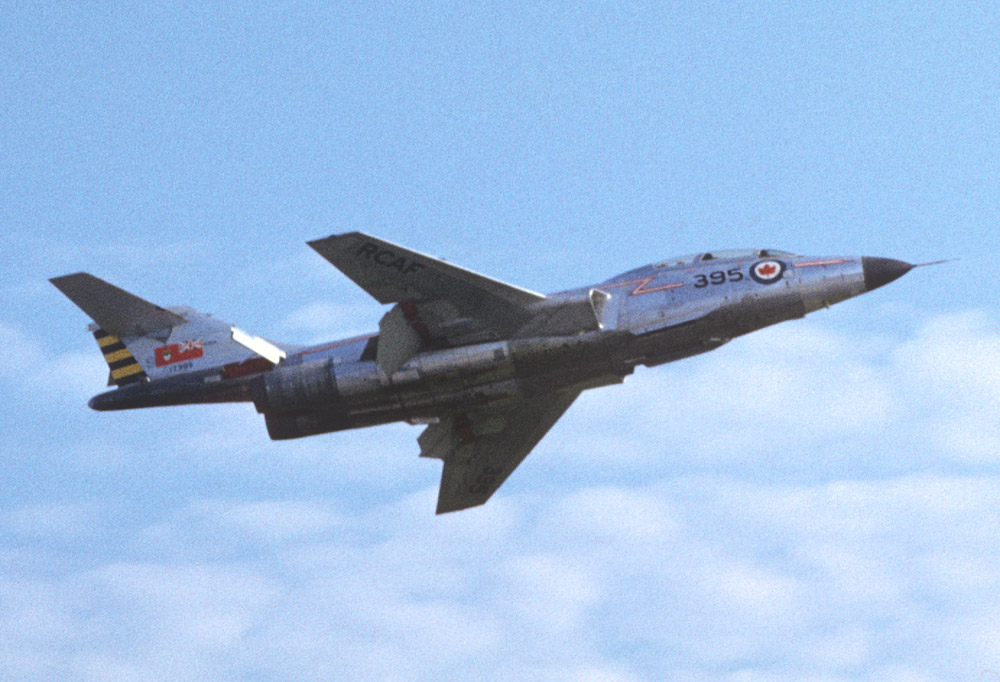
Between 1970 and 1972, Canada traded 56 original CF-101s back to the USAF for 66 replacements under Operation Peace Wings.
Tim Strocel was a Canadian Air Force pilot between 1974 and 2008 and flew the CF-101 from March 1981 until July 1984 accumulating 653.4 hours on Voodoos and 5034 total hours during his military career. “The CF-101 Voodoo was a remarkable all-weather, high-altitude, supersonic interceptor that was easy to fly with highly responsive flight controls and two powerful J-57 P-55 turbojet engines,” Strocel said. “I don’t recall the exact time it took to climb from take-off to intercept altitude (30,000 ft.) but it was extremely quick in all weather conditions and any time of day or night. I remember the very first time I exceeded Mach 1. The most striking characteristic was the sudden, absolute quiet as the aircraft broke through the sound barrier and outpaced the sound from the aircraft engines.”
(Image Credit: MAAM)
Strocel has nothing but fond memories of the supersonic aircraft and recalls its impressive performance in all weather conditions. “Overall, the CF-101 Voodoo was a wonderful aircraft to fly,” he said. “I had the opportunity to fly the Voodoo on numerous occasions at Tyndall AFB where we would fire inert AIM-4 missiles at drone targets (Convair F-106 Delta Dart) and the opportunity to participate in several exercises at Exercise Maple Flag. I was one of two Voodoo pilots who successfully completed the Fighter Weapons Instructor Course in Cold Lake.”
[wbn_ads-google_one]
The Air Force Museum Society of Alberta (AFMSA) is located at 4520 Crowchild Trail SW Calgary AB T2T 5J4. There are five aircraft on site: an F5 mounted on a pole which can be seen from Crowchild Trail, an F-86 Sabre, CF-104 Starfighter and F-18 Hornet are displayed inside the Cold War exhibit and a T-33 (T-bird) parked in the grass south of the museum. The hangars and the Cold War-era fighters are part of an exhibit that describes the history of the Cold War and Canada’s contribution to NORAD and NATO. The exhibit also pays tribute to the many Canadians who stood ready to defend Canada throughout the Cold War.
For more information about the museum and the Cold War exhibit, please go to: https://rcaf.museum/visit/coldwar-museum
